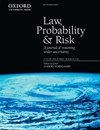Industrialization and Democracy
IF 2.7
4区 社会学
Q1 LAW
引用次数: 0
Abstract
I provide a new theory of the relationship between economic development and democracy. I argue that a large share of employment in manufacturing (i.e., industrialization) makes mass mobilization both more likely to occur and more costly to suppress. This increases the power of the masses relative to autocratic elites, making democracy more likely. Novel manufacturing employment data for 145 countries over 170 years (1845--2015) supports this hypothesis. First, all highly developed countries in the West and East Asia democratized when approximately 25% of their workforce was employed in manufacturing, and virtually no other country has ever reached this level without eventually becoming a well-functioning democracy. Second, industrialization is strongly correlated with democracy, even after accounting for two-way fixed effects and other economic determinants of democracy (e.g., income and inequality). Last, unlike with other economic determinants the effect occurs on both transitions and consolidations, and is equally large after WWII.工业化与民主
我提出了一种经济发展与民主关系的新理论。我认为,制造业(即工业化)的大量就业使得大规模动员更有可能发生,抑制起来的成本也更高。这增加了大众相对于专制精英的权力,使民主更有可能实现。145个国家170年间(1845- 2015)的制造业就业数据支持这一假设。首先,所有在东亚和西方高度发达的国家,当大约25%的劳动力从事制造业时,就实现了民主化,而且几乎没有其他国家达到这个水平而最终没有成为一个运作良好的民主国家。其次,工业化与民主密切相关,即使在考虑了双向固定效应和民主的其他经济决定因素(如收入和不平等)之后也是如此。最后,与其他经济决定因素不同,这种影响既发生在转型过程中,也发生在整合过程中,而且在二战后同样巨大。
本文章由计算机程序翻译,如有差异,请以英文原文为准。
求助全文
约1分钟内获得全文
求助全文
来源期刊

Law Probability & Risk
MATHEMATICSSTATISTICS & PROBABILITY&-STATISTICS & PROBABILITY
CiteScore
2.10
自引率
28.60%
发文量
8
期刊介绍:
Law, Probability & Risk is a fully refereed journal which publishes papers dealing with topics on the interface of law and probabilistic reasoning. These are interpreted broadly to include aspects relevant to the interpretation of scientific evidence, the assessment of uncertainty and the assessment of risk. The readership includes academic lawyers, mathematicians, statisticians and social scientists with interests in quantitative reasoning.
The primary objective of the journal is to cover issues in law, which have a scientific element, with an emphasis on statistical and probabilistic issues and the assessment of risk.
Examples of topics which may be covered include communications law, computers and the law, environmental law, law and medicine, regulatory law for science and technology, identification problems (such as DNA but including other materials), sampling issues (drugs, computer pornography, fraud), offender profiling, credit scoring, risk assessment, the role of statistics and probability in drafting legislation, the assessment of competing theories of evidence (possibly with a view to forming an optimal combination of them). In addition, a whole new area is emerging in the application of computers to medicine and other safety-critical areas. New legislation is required to define the responsibility of computer experts who develop software for tackling these safety-critical problems.
 求助内容:
求助内容: 应助结果提醒方式:
应助结果提醒方式:


